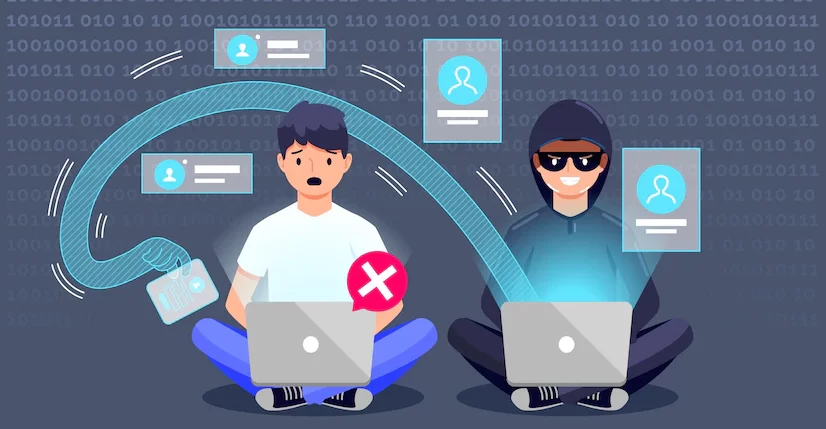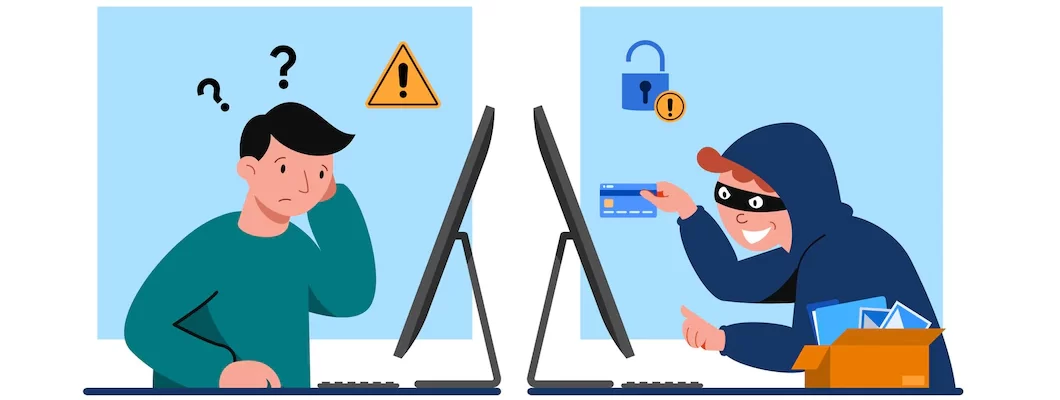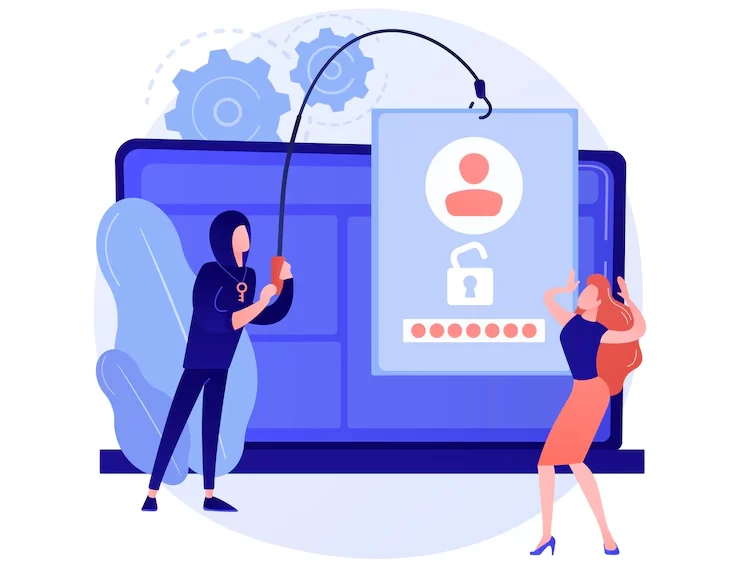Area code 657 scams: Stay Alarm Of These Frauds!
- 1 What is Scams Area Code 657?
- 2 How Do Scams with Area Code 657 Work?
- 2.1 1. Acquisition of Real Phone Numbers
- 2.2 2. Neighbor Spoofing Technique
- 2.3 3. Variety of Scam Types
- 2.4 4. Creating a Sense of Urgency and Fear
- 2.5 5. Use of Legitimate-Sounding Scripts
- 2.6 6. Payment Methods
- 2.7 7. Global Reach
- 3 Where is the 657 area code?
- 4 Who decides when there will be a new area code?
- 5 Here are some of the most common scams in Area Code 657
- 5.1 1. Lottery Scams
- 5.2 2. IRS Impersonation Scams
- 5.3 3. Charity Scams
- 5.4 4. Tech Support Scams
- 5.5 5. Business and Government Impersonation Scams
- 5.6 6. Loan and Debt Relief Scams
- 5.7 7. Prize and Sweepstakes Scams
- 6 Conclusion
- 6.1 FAQs
- 6.1.1 1. What should I do if I receive a call from area code 657?
- 6.1.2 2. How can I verify if a call from area code 657 is legitimate?
- 6.1.3 3. Are all calls from area code 657 scams?
- 6.1.4 4. What are common signs of a phone scam?
- 6.1.5 5. How can I protect myself from phone scams?
- 6.1.6 6. What should I do if I suspect I’ve been scammed?
- 6.1.7 7. How can I report a scam involving area code 657?
- 6.1.8 8. Why are scammers using area code 657?
In the United States, calls and texts from area code 657 have become known for being scams. Unknown callers and texters with this area code often try to trick people into giving out private information or wiring money. Anyone calling from this area code is probably trying to scam you. Read on to find out if area code 657 scams.
What is Scams Area Code 657?
Scams involving area code 657 scams are a new way that con artists try to get you to give them your financial information. For the 657 area code scam to work, a company has to buy a real phone number from a phone company. When a customer calls, the call goes through the Public Switched Telephone Network (PSTN), which is a network of switching centres and long-distance lines that connects all customers to a call centre. This makes it look like the customer called their local phone number. The scam works because you can’t tell if a call is real or not if you don’t recognise the area code.
Phone scams with the area code 657 look like a missed call from an area code you don’t know. Area code scams often look like lottery scams, social media scams, or other types of scams that have something to do with money. The area code 657 scams could be from anywhere in the world, but most scammers use area code tricks to make you think they are calling from nearby.
How Do Scams with Area Code 657 Work?
In the First Generation or “FGT” scam, a company buys a real phone number from a phone company. This is how the area code 657 scams. When a customer calls, the call goes through the Public Switched Telephone Network (PSTN), which is a network of switching centres and long-distance lines that connects all customers to a call centre. This makes it look like the customer called their local phone number.
Scams involving area code 657 employ a sophisticated and deceptive approach to trick victims into divulging personal information or sending money. Here’s a detailed breakdown of how these scams typically operate:
1. Acquisition of Real Phone Numbers
Scammers purchase real phone numbers from legitimate phone companies, giving them an air of authenticity. This allows them to operate within the Public Switched Telephone Network (PSTN), a network of switching centers and long-distance lines connecting all telephone users. This infrastructure ensures that when a call is made, it appears to originate from a local number, making it more likely for the recipient to answer.
2. Neighbor Spoofing Technique
One of the key tactics used in area code 657 scams is “neighbor spoofing.” This technique involves altering the caller ID to display a local number, often one with the same area code and prefix as the victim’s number. This manipulation makes the call seem familiar and local, increasing the chances of the recipient picking up.
3. Variety of Scam Types
These scams come in various forms, each designed to exploit different vulnerabilities:
- Lottery and Prize Scams: Victims receive calls claiming they’ve won a significant prize or lottery. To claim their winnings, they are instructed to provide bank details or pay a processing fee, resulting in financial loss without receiving any prize.
- IRS Impersonation Scams: Callers pose as IRS agents, threatening victims with arrest or legal action for unpaid taxes unless they make an immediate payment through unconventional means like prepaid debit cards or wire transfers.
- Charity Scams: Scammers solicit donations for fake charities, often exploiting recent disasters or crises to evoke sympathy and urgency. The donations go directly to the scammers, with no money reaching legitimate charitable causes.
- Tech Support Scams: Impersonating tech support representatives from reputable companies, scammers claim that the victim’s computer is infected with a virus. They offer to “fix” the issue for a fee and remote access, which they then use to steal sensitive information or demand further payments.
- Business and Government Impersonation Scams: Victims receive calls from individuals pretending to be from well-known businesses or government agencies. These callers claim there are issues with the victim’s bank account, utility service, or social security number, demanding immediate action or payment.
- Loan and Debt Relief Scams: Scammers offer fake loans or debt relief services, asking for upfront fees or personal information. Victims end up losing money or having their identities stolen without receiving any actual help.
- Prize and Sweepstakes Scams: Similar to lottery scams, victims are told they’ve won a prize or sweepstakes they never entered. To claim the prize, they are asked to pay fees or taxes upfront, but no prize is ever delivered.
4. Creating a Sense of Urgency and Fear
Scammers often use high-pressure tactics to create a sense of urgency and fear. They might threaten immediate legal action, arrest, or severe consequences if the victim does not comply with their demands quickly. This pressure makes it difficult for victims to think clearly and increases the likelihood of them following the scammer’s instructions.
5. Use of Legitimate-Sounding Scripts
Scammers typically use well-rehearsed scripts that sound professional and convincing. They may use official-sounding jargon, reference real laws or regulations, and even provide fake badge numbers or employee IDs to seem more credible.
6. Payment Methods
Scammers often request payment through methods that are difficult to trace and reverse, such as prepaid debit cards, wire transfers, or cryptocurrency. These payment methods make it challenging for victims to recover their money once it has been sent.
7. Global Reach
Although the 657 area code is localized to Southern California, the scammers using these numbers can operate from anywhere in the world. The use of internet-based calling systems and the PSTN allows them to mask their true location, making it harder for authorities to track them down.
Where is the 657 area code?
Residents of Anaheim, Buena Park, Cypress, Fullerton, Garden Grove, Irvine, Huntington Beach, La Palma, Los Angeles County, Long Beach, Ontario, Orange County, Fountain Valley, Torrance, Tustin, Placentia, Santa Ana, Westminster, Yorba Linda are all served by the 657 area code. Sometimes, it only serves a small part of a city or region. The 657 area code was added on top of the 714 area code in September 2008. The 714 area code has been around since 1951. The first area code in this area was created in 1947 when the 213 prefixes were made. Since then, there have been many changes to California area codes.
Who decides when there will be a new area code?
There is a set way to decide when and where to use area codes. As cities and rural areas get bigger and more people move in, they need more phone numbers. The North American Numbering Plan Administration (NANPA) looks at how regions are growing and how many area codes they need so that they can figure out when a new one might be required.
It is thought that a single area code could have as many as eight million different seven-digit phone numbers. Most of the time, though, not all of these numbers are used. Companies like cell phone service providers often buy blocks of 10,000 phone numbers. This can make an area code run out of phone numbers before all the possible numbers have been given to people. In general, it is up to each state to decide when and how to add new area codes for each geographic area within its borders. It’s easy to call a 657 number. If you’re calling from outside the US, you’ll need the country code, the Numbering Plan Area (NPA) Code, the NXX or central office code, and the four-digit subscriber number.
Here are some of the most common scams in Area Code 657
1. Lottery Scams
In lottery scams, the victim receives a call claiming they have won a significant sum of money in a lottery. The caller often insists that to claim the prize, the recipient must first provide their bank account details or pay a fee upfront. Once the victim complies, the scammers either steal the money directly from the account or disappear after receiving the “fee.” In reality, no lottery winnings exist, and the victim is left with financial loss.
2. IRS Impersonation Scams
Scammers impersonating IRS agents call individuals and assert that they owe back taxes. The callers use aggressive tactics, including threats of arrest, deportation, or suspension of licenses, to intimidate victims into making immediate payments. They often demand payment through unconventional methods such as prepaid debit cards or wire transfers. The IRS does not operate in this manner, and legitimate tax issues are communicated through official letters, not unsolicited calls.
3. Charity Scams
Charity scams exploit the goodwill of individuals by requesting donations for fake charities. These scammers often create a sense of urgency, claiming to raise funds for recent disaster relief efforts or other worthy causes. They may use names that sound similar to well-known charities to lend credibility to their request. In reality, the money donated goes directly into the scammer’s pockets, and the intended charitable causes receive nothing.
4. Tech Support Scams
In tech support scams, scammers pose as representatives from reputable tech companies, such as Microsoft or Apple. They claim that the victim’s computer is infected with a virus or has some technical issue that needs immediate attention. The scammer then offers to “fix” the problem if the victim grants remote access to their computer and pays a fee. Once granted access, the scammer can steal sensitive information, install malware, or demand additional payments.
5. Business and Government Impersonation Scams
These scams involve callers pretending to be from well-known businesses or government agencies. They may claim that there is an issue with the victim’s bank account, utility service, or social security number. The caller often asks for personal information to “verify” the victim’s identity or demands immediate payment to avoid service interruption or legal consequences. Legitimate businesses and government agencies do not operate in this manner and will not request sensitive information or payments over the phone.
6. Loan and Debt Relief Scams
Scammers offer fake loans or debt relief services, promising to help individuals with their financial troubles. They may ask for upfront fees or personal information to process the loan or debt relief. Instead of receiving assistance, the victims lose money or have their identities stolen. Legitimate lenders and debt relief services do not require upfront payments and will not ask for sensitive information over unsolicited calls.
7. Prize and Sweepstakes Scams
Similar to lottery scams, these scams inform victims that they have won a prize or sweepstakes they never entered. To claim the prize, the victim is asked to pay fees or taxes in advance. Once the payment is made, the scammer disappears, and the victim receives nothing. Real sweepstakes and prize organizations do not require winners to pay upfront fees to claim their winnings
Conclusion
In conclusion, scams involving area code 657 have become a significant concern for residents in the affected regions. These scams often appear legitimate, making it difficult for individuals to discern the authenticity of the calls. It’s crucial to be vigilant and cautious when receiving calls or texts from unknown numbers, especially those with the 657 area code. Always verify the source before sharing personal or financial information, and report any suspicious activity to the authorities. Staying informed and cautious can help protect you from falling victim to these scams.
FAQs
1. What should I do if I receive a call from area code 657?
If you receive a call from area code 657 and do not recognize the number, it’s best to avoid answering. If you do answer and the call seems suspicious, do not share any personal or financial information. Hang up immediately and report the number to the authorities or your phone service provider.
2. How can I verify if a call from area code 657 is legitimate?
To verify the legitimacy of a call from area code 657, try to independently contact the organization the caller claims to represent using a verified phone number from their official website. Do not use any contact information provided by the caller.
3. Are all calls from area code 657 scams?
Not all calls from area code 657 are scams. This area code serves several cities in Southern California. However, due to the high incidence of scams originating from this area code, it’s essential to exercise caution when receiving calls from unknown numbers.
4. What are common signs of a phone scam?
Common signs of a phone scam include unsolicited calls requesting personal or financial information, pressure to act quickly, threats of legal action or arrest, and requests for payment through unconventional methods such as gift cards or wire transfers.
5. How can I protect myself from phone scams?
To protect yourself from phone scams, do not answer calls from unknown numbers, do not share personal or financial information over the phone, and use call-blocking features or apps. Educate yourself about common scams and report suspicious calls to the Federal Trade Commission (FTC) or your local authorities.
6. What should I do if I suspect I’ve been scammed?
If you suspect you’ve been scammed, immediately contact your bank or credit card company to stop any unauthorized transactions. Report the scam to the Federal Trade Commission (FTC) and your local police department. Monitor your accounts for any unusual activity and consider placing a fraud alert on your credit reports.
7. How can I report a scam involving area code 657?
You can report a scam involving area code 657 to the Federal Trade Commission (FTC) through their online complaint form or by calling their hotline. You can also report it to your local police department and your phone service provider.
8. Why are scammers using area code 657?
Scammers use area code 657 to create the appearance that they are calling from a local number, increasing the likelihood that the recipient will answer the call. This tactic, known as “neighbor spoofing,” exploits the trust people have in local numbers to trick them into providing personal or financial information.



















